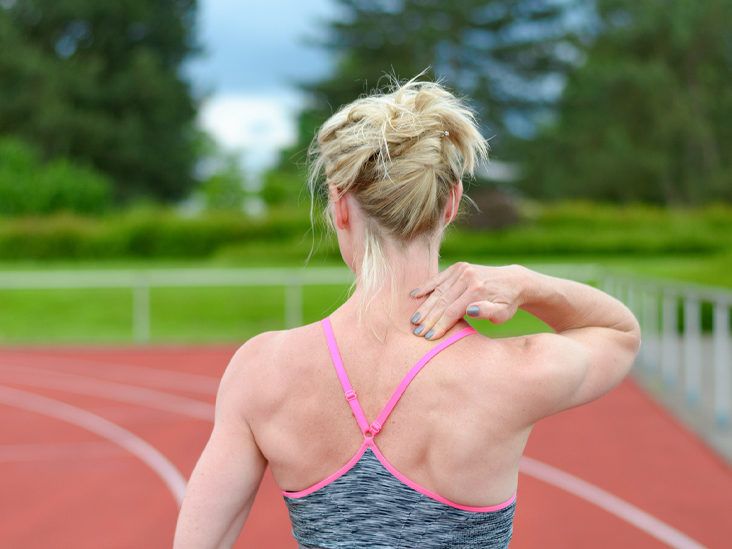Some home remedies like exercising, wearing a brace, and receiving acupuncture may help ease mild osteoarthritis pain. For more severe pain, you may need medical treatments like steroid injections or surgery.
Osteoarthritis is a degenerative joint disease.
Over time, it could lead to symptoms that range from mild discomfort to severe pain, loss of mobility, and decreased quality of life.
There’s no cure for osteoarthritis, but a treatment plan could help ease the symptoms of pain. Depending on the severity of your symptoms, this may include lifestyle changes as well as medical treatments.
Keep reading to learn more about how you can relieve osteoarthritis with home remedies and medical treatments.
A variety of home remedies may help provide relief from symptoms of osteoarthritis, such as joint pain, stiffness, and swelling.
A healthcare professional could recommend the best home remedies to target your specific type of osteoarthritis.
Research suggests that maintaining a healthy-for-you weight is a key component in managing osteoarthritis symptoms, especially if you’re living with obesity or overweight.
Losing 1 pound of body weight could help relieve up to
A healthcare professional may recommend a combination of exercise and dietary changes to help you manage your weight for osteoarthritis.
Physical activity could
- increase joint mobility and strength
- improve endurance
- reduce stiffness
The
A physical therapist could help develop an exercise plan to relieve pain in specific areas, such as your hands, knees, or hips.
Acupuncture is a form of ancient Chinese medicine. Practitioners insert needles into specific pressure points in your body to help relieve pain.
Some
Using cold and heat compresses could relieve osteoarthritis pain, according to the
- Cold: Applying cold compresses for 20 minutes 2–3 times per day could help reduce inflammation, especially after physical activity. You should not apply them directly to the skin.
- Heat: Applying hot compresses for 20 minutes 2–3 times per day could help loosen stiff joints and make movement easier.
The
- Braces and splints can immobilize affected joints to help take pressure off from them.
- Kinesiotaping could also help relieve pressure, but it allows the joint to move rather than stay immobilized.
- Canes could help increase stability and relieve pressure from the affected joint.
Some
It’s important to note these devices don’t treat the underlying causes of osteoarthritis pain, but they may help ease pain.
Some supplements and herbal remedies may help osteoarthritis pain, such as:
- omega-3 fatty acids
- fish oil
- curcumin
- ginger
- collagen
- aloe vera
However, the
As such, it’s best to speak with a healthcare professional about whether supplementation is a good treatment for you.
Learn more about supplements for osteoarthritis.
A healthcare professional may recommend medical treatments to help relieve osteoarthritis pain if home remedies aren’t enough.
The
- nonsteroidal anti-inflammatory drugs (NSAIDs)
- acetaminophen (Tylenol)
- topical medications, such as capsaicin
It’s important to note that NSAIDs and acetaminophen aren’t long-term solutions due to potential side effects.
The
If OTC medications aren’t effective, speak with a healthcare professional. They may prescribe stronger NSAIDs to help relieve inflammation and reduce pain.
Learn more about OTC medications for osteoarthritis.
If home remedies and OTC medications aren’t successful, a healthcare professional may recommend corticosteroid injections. These may provide short-term pain relief by reducing inflammation.
Some other injections may also help provide short-term pain relief, such as:
- platelet-rich plasma (PRP) therapy
- arthrocentesis (fluid aspiration)
- hyaluronic acid (HA) injections
- prolotherapy
However, the
Learn more about injection therapies for osteoarthritis.
If other treatment methods aren’t effective at relieving osteoarthritis pain, a healthcare professional may recommend surgery. Some procedures may include:
- osteotomy
- bone fusion
- joint replacement surgery, such as hip and knee replacements
- arthroscopy
Learn more about surgery for arthritis.
What causes osteoarthritis to flare up?
According to the Arthritis Foundation, overexertion during physical activity is the most common cause of osteoarthritis flare-ups.
How can I stop osteoarthritis from getting worse?
The best way to slow the progression of osteoarthritis is to follow a treatment plan developed by a healthcare professional. This may include lifestyle changes, medications, and surgery, among others.
Osteoarthritis is a degenerative joint condition that may cause pain, impacting your mobility, function, and quality of life.
Some home remedies and OTC medications may provide pain relief. However, in some cases, you may require further medical treatment, such as injections or surgery.
Speak with a healthcare professional about pain relief for osteoarthritis. They could provide a treatment plan specific to you.







